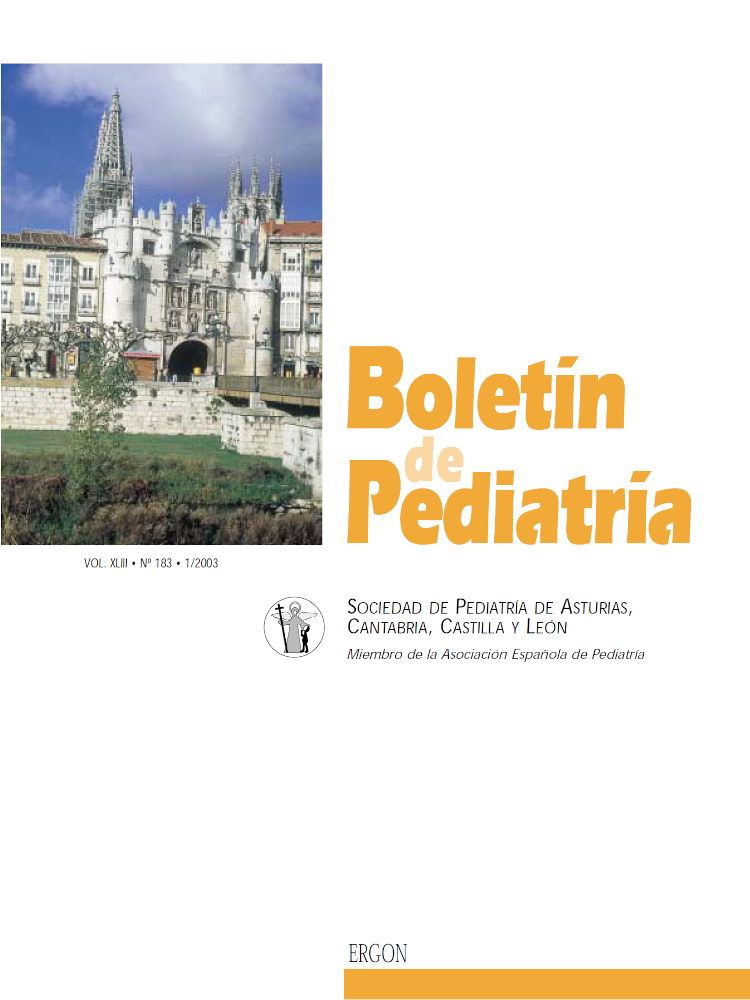Abstract
Objectives: The aim of this study was to describe the aeroallergens sensitization profile in children with asthma and/or rhinoconjunctivitis. Patients and methods: Population based prevalence study. All children aged 4 to 13 from an health area in Asturias were included. Clinical history was revised for each child and recorded: asthma diagnosis, rhinoconjunctivitis diagnosis, type of allergic study and its results. Study dated: 1 january, 2003. Results: Population including in the Study was 452 children (53% male) and 19.02% of them had allergic asthma and/or rhinoconjunctivitis. Two out of three were male. Diagnosis was: asthma 17.69% (11.28% allergic, 5.3% no allergic); rhinoconjunctivitis 15.48%. Between allergic population: presented both asthma and rhinoconjunctivitis (40.7%); only rhinoconjunctivitis (40.7%) and only asthma (18.6%). The most prevalent allergen was house dust mites (88.7%), grass pollen (50%), dog (16.25%), Alternaria (12.5%), cat (10%) and cockroach (10%). Children with rhinoconjunctivitis (with or without asthma) had more grass pollen sensitization and more polisensitization than children with only asthma. Mites sensitization was high since age 4 and grass pollen followed an ascendent line since age 5-6. Conclusions: 1) The most of the children with allergic asthma have got rhinoconjunctivitis. 2) Two out of three allergics are male. 3) Mites are the most prevalent allergen in all age groups. 4) Grass pollen became more important according the age of children.

This work is licensed under a Creative Commons Attribution-NonCommercial 4.0 International License.
Copyright (c) 2003 Boletín de Pediatría
